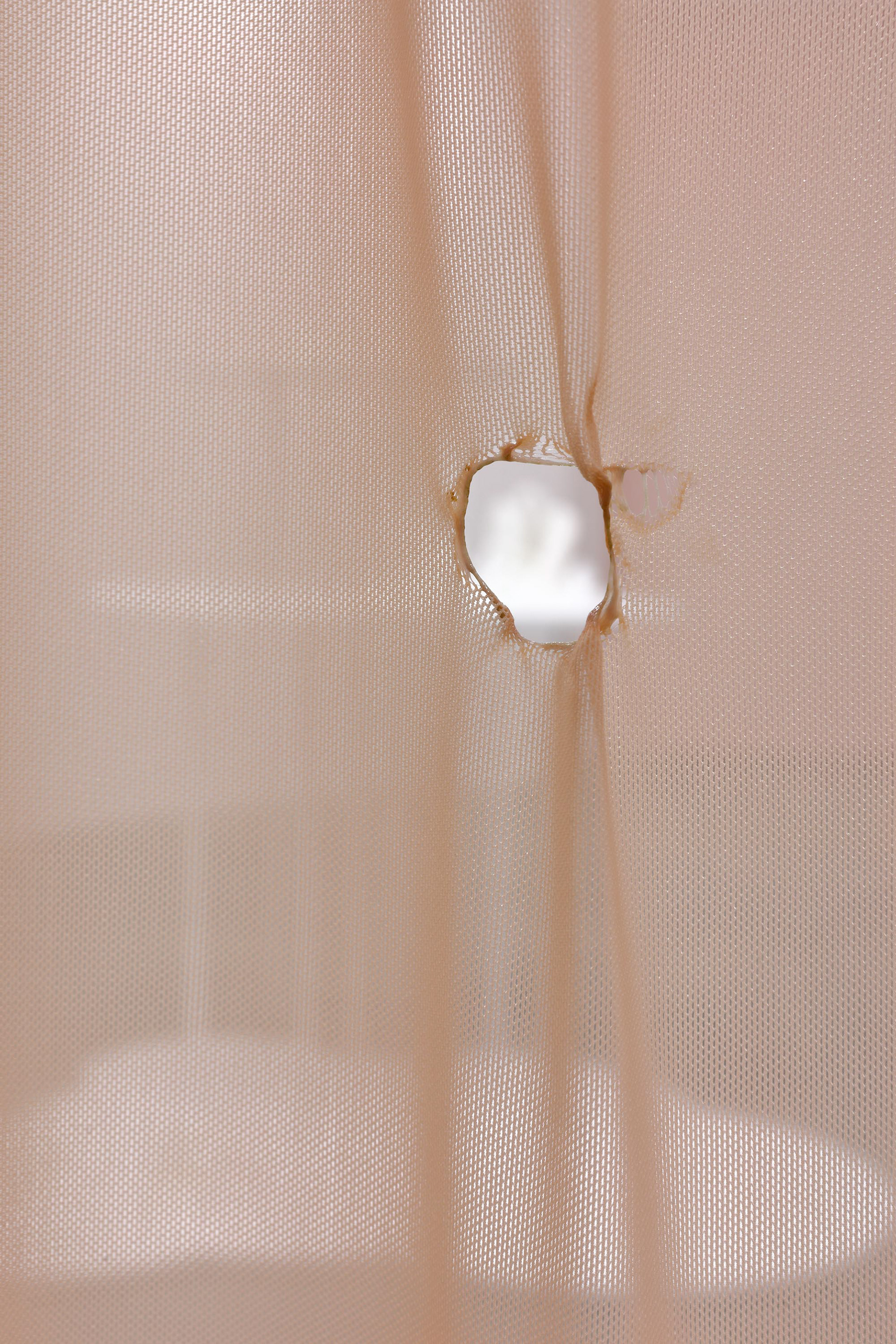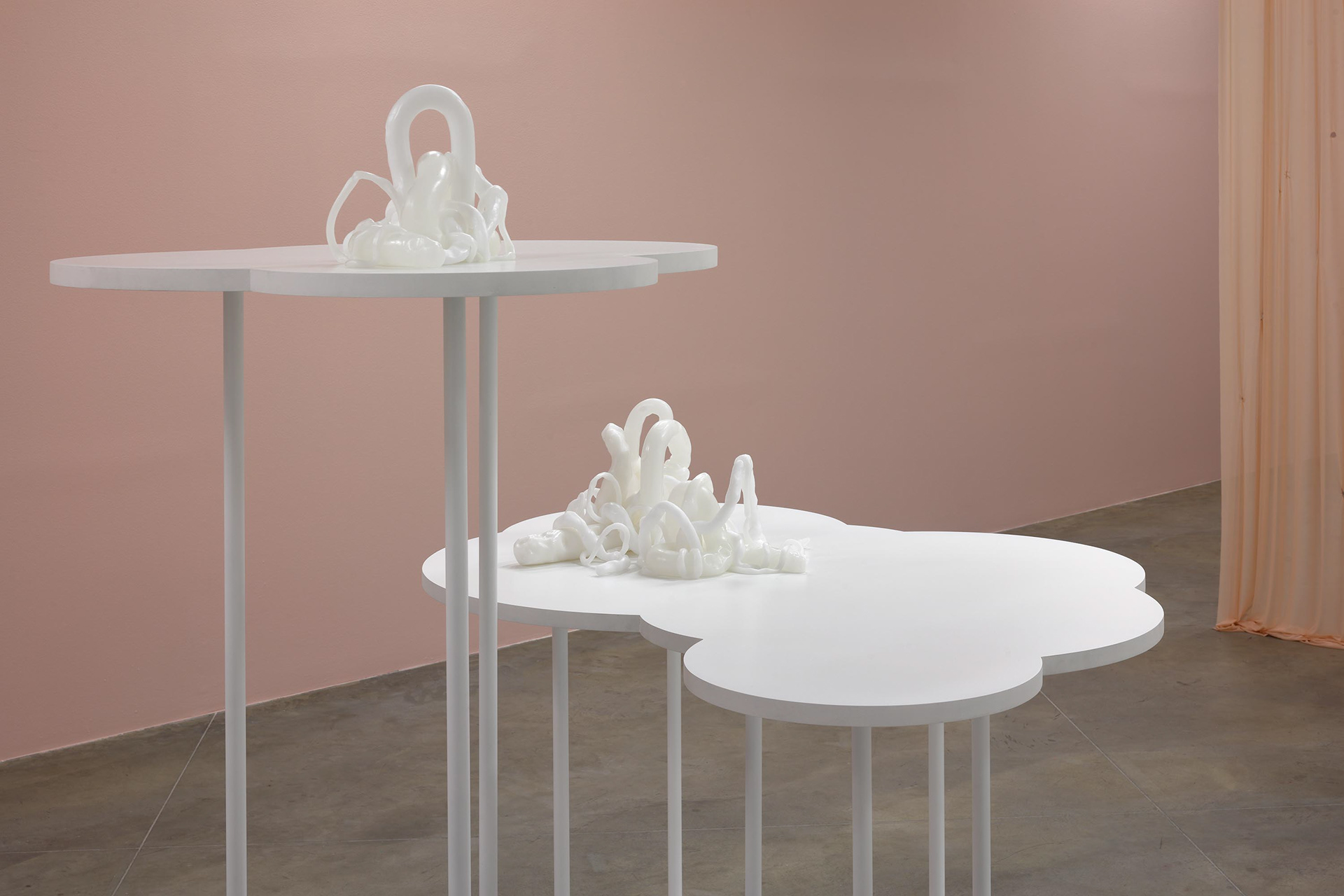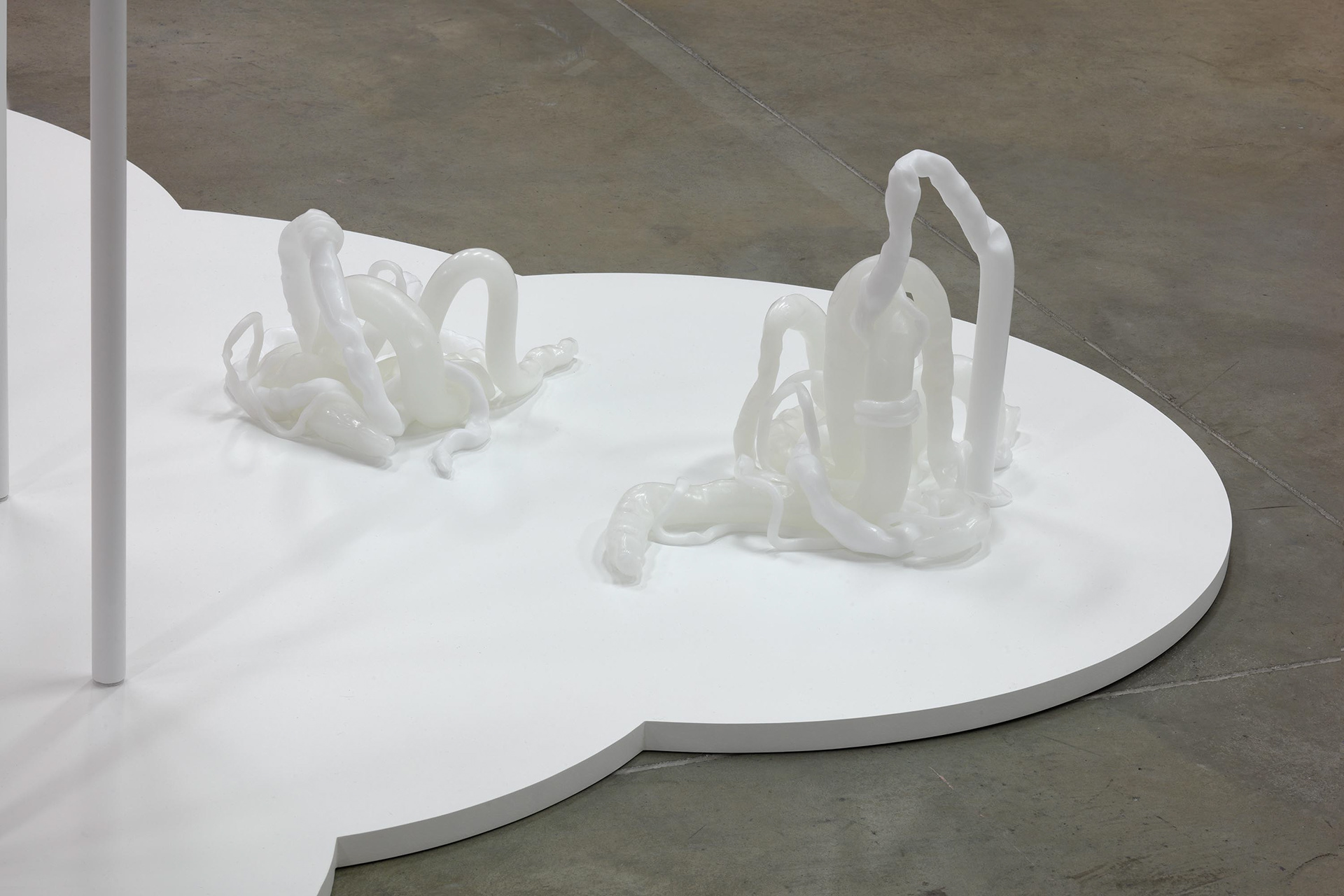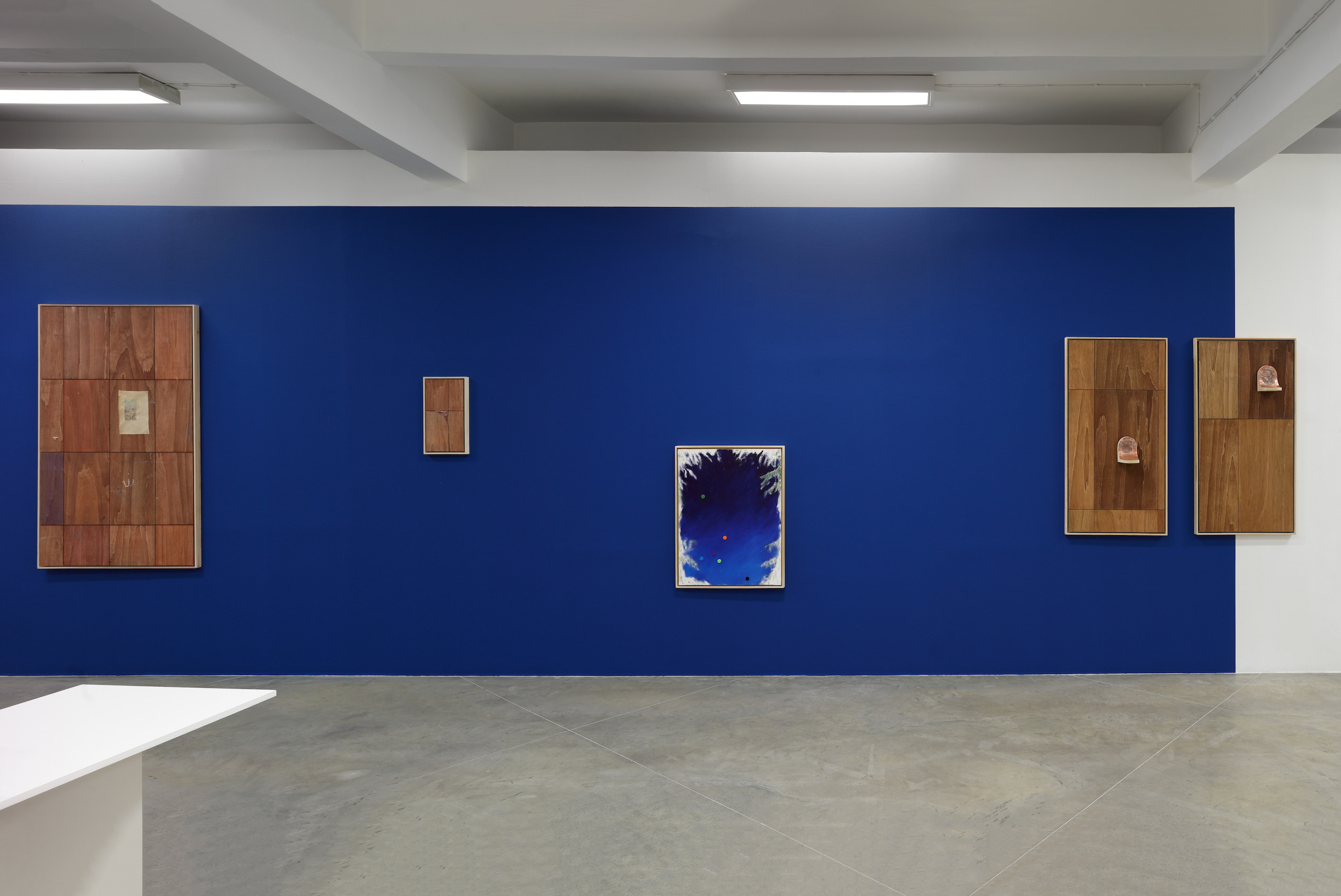










A compositionally and dynamically balanced exhibition environment, formal purity of artefacts, obsessively precise rendering of the individual segments or a naturally developing vocabulary of art symbolism. The latest exhibition projects (Children of Ján Moksó, 2020, New Synagogue; Monument of Possible Fall, 2019, At Home Gallery) of the Slovak multimedia artist Kristián Németh (*1983) define from a perspective view his current artistic handwriting and probably also set imaginary standards of his future work. It is characterised by a natural combination of general subjects and intimate, almost traumatic contents, while the artist does not shun institutional criticism masked by a symbolic artistic language inspired by and derived from everyday reality.
Németh in his post-conceptual approach to the creation of objects, installations, performances, video art and staged photographs continuously touches upon subjects rooted in the functioning of the Catholic church. In some cases he examines, in an almost investigative manner, personal and family traumas, sexuality and sexual abuse, the dichotomy of power, the distorted values and intentions of the protagonists of the church, while at the same time questioning the general idea of the (false) positivity and transparency of the perception of a religious society. Although the institutional criticism of the church makes up a greater part of the artist’s research, he gradually updates it with a more universal content line which is related to more general subjects responding to the state of society.
The unplanned change of the dates of the solo exhibition Warm Greetings caused by the pandemic situation gave the artist an opportunity to review the original project and thus to come up with something new, as well as to reflect on the current political and social situation. At a glance, this site-specific project is based on Németh’s previous work and an imaginary library of the artist’s approaches from which he has selected significant light colours, an airy installation, material and formal variety, minimalist stylization and a stage design approach to the building of the exhibition experience.
The central motif placed at the core of the exhibition environment involves wax objects bent by the effect of warmth and force. Candles deformed by an art technique which Németh originally took from the context of the Eucharist represented in his past projects the vulnerability and the unconscious adjustment of individuals to the canons of the church power. In the current update, their numbers are multiplied, resulting in accumulations of organic wholes that appear homogenous yet, on closer inspection, reveal their unique heterogeneous character. Through the accumulation of destroyed candles Németh illustrates the influences of a superior power, unshakeable external stimuli, social norms, pressures and expectations affecting an individual or a group in the present world. Through the form of an invisible physical gesture and an imaginary “warm greeting“ the artist creates symbolic relics and comments on the process of their birth in the form of stylized images communicating the poetics of a simple gesture between creativity and destruction.
The subtle yet unmistakeable colour scheme of the exhibition project which, apart from the fact that it helps dynamize the space and accentuates the meaning of the individual segments, also reflects the symbolism of the colours used. White is connected with purity, innocence, truth ad justice, while the shade of incarnate pink is related to the feminine, corporeality and homosexuality. Apart from fabrics employed in a stage-design fashion we can observe the selected colour scheme on specially designed abstracted wooden pedestals illustrating stylized traces of the melted candles. Together with stigmatically rendered burnt spots, they indicate the invisible yet clearly present elements of warmth and fire, constituting an important ideological background of the whole project.
Kompozične a dynamicky vyvážený výstavný environment, formálna čistota vytvorených artefaktov, obsesívno–precízne spracovanie jednotlivých segmentov či prirodzene sa rozvíjajúci vokabulár autorskej symboliky. Posledné výstavné projekty (Deti Jána Moksoá, 2020, Nová Synagóga, Monument of Possible Fall, 2019, At Home Gallery) slovenského multimediálneho umelca Kristiána Németha (*1983) z perspektívneho pohľadu definujú jeho súčasný autorský rukopis a pravdepodobne nastavujú pomyselné štandardy budúcej tvorby. Charakterizuje ju prirodzené spojenie univerzálnych tém s intímnymi a až traumatickými obsahmi, pričom sa neštíti inštitucionálnej kritike, ktorú kamufluje symbolickým výtvarným jazykom inšpirovaným a vyňatým z bežnej reality.
Németh sa v postkonceptuálnom prístupe k tvorbe objektov, inštalácií, performancií, videí či inscenovaných fotografií kontinuálne dotýka tém vychádzajúcich z fungovania katolíckej cirkvi. Niekedy priam investigatívnym spôsobom skúma osobné rodinné traumy, sexualitu či sexuálne zneužívanie, mocenské vzťahy či pokrivené hodnoty a úmysly cirkevných protagonistov, pričom spochybňuje všeobecnú predstavu o (falošnej) pozitivite a transparentnosti vnímania sakrálnej spoločnosti. Hoci inštitucionálna kritika cirkvi tvorí väčšinovú časť autorského výskumu, postupne ho aktualizuje univerzálnejšou obsahovou líniou, ktorá sa vzťahuje na všeobecnejšie témy reagujúce na stav spoločnosti.
Neplánovaná zmena pôvodného termínu samostatnej výstavy Warm Greetings spôsobená pandemickou situáciou, dala autorovi možnosť prehodnotiť pôvodný projekt a prísť tak s niečim novým a zohľadniť aktuálnu politicko-spoločensku situáciu. Site-specific projekt už na prvý pohľad vychádza z Némethových starších prác a pomyselnej knižnice autorských prístupov, z ktorej si vybral signifikantnú svetlú farebnosť, vzdušnú inštaláciu, materiálnu a formálnu rozmanitosť, minimalistickú štylizáciu či scénografický prístup k budovaniu výstavného zážitku.
Ústredným motívom, vnoreným do jadra výstavného environmentu, sú vplyvom tepla a sily ohýbané voskové objekty. Autorskou technikou deformované sviečky, ktoré Németh pôvodne vyňal z kontextu prvého svätého prijímania, reprezentovali v minulých projektoch zraniteľnosť a nevedomé prispôsobovanie sa jedincov kánonom cirkevnej moci. V súčasnej formálnej aktualizácii ich počty násobí čím vytvára nakumulované organické celky pôsobiace ako homogénne hmoty, ktoré však z blízkeho pohľadu odkrývajú svoj jedinečný heterogénny charakter. Spleťou zničených sviečok Németh ilustruje vplyvy nadradenej moci, neovplyvniteľných externých podnetov, spoločenských noriem, tlakov a očakávaní pôsobiacich na jednotlivca či kolektív v súčasnom svete. Formou neviditeľného fyzického gesta a pomyselným "vrúcnym pozdravom" vytvára symbolické relikvie, ktorých proces vzniku komentuje formou štylizovaných obrazov komunikujúcich poetiku jednoduchého gesta na hranici medzi kreativitou a deštrukciou.
Subtilná a súčasne nepriehľadnuteľná farebnosť výstavného projektu, ktorá okrem toho, že dopomáha dynamizácii priestoru a zdôrazňuje významový charakter jednotlivých segmentov, takisto reflektuje symboliku použitých farieb. Biela je spájaná s čistotou, nevinnosťou, pravdou či spravodlivosťou a odtieň telovoružovej sa zas vzťahujúce k ženstvu, telesnosti či homosexualite. Okrem scénograficky použitých textíliách sledujeme zvolený kolorit aj na špeciálne navrhnutých abstrahujúcich drevených podstavcoch, ktoré ilustrujú štylizovanu stopu po roztopených sviečkach. Tie, spoločne so stigmaticky ladenými vypálenými miestami zároveň načrtávajú vizuálne neviditeľné, ale zjavne prítomné elementy tepla a ohňa, ktoré sú dôležitým ideovým backgroundom celého projektu.









